Sol Calero / Global
Seeing in colour
Caracas-born artist Sol Calero’s vibrant, immersive works explore representation and identity.
Sol Calero is constantly thinking about her surroundings. “When I stay in an Airbnb, the first thing I do is change the whole layout,” she says. “Sometimes I even email the owner and say, ‘Hey, I moved around your apartment. I think it works better like this but would you like me to change it back?’”
It’s no surprise, then, that the Venezuelan artist’s studio in Berlin is an impeccably organised space and one that chimes with Calero’s practice. The exposed beams resonate with the architectural nature of much of her work, while the rooms are peppered with reference books on buildings, art and poetry, as well as furniture from past projects.
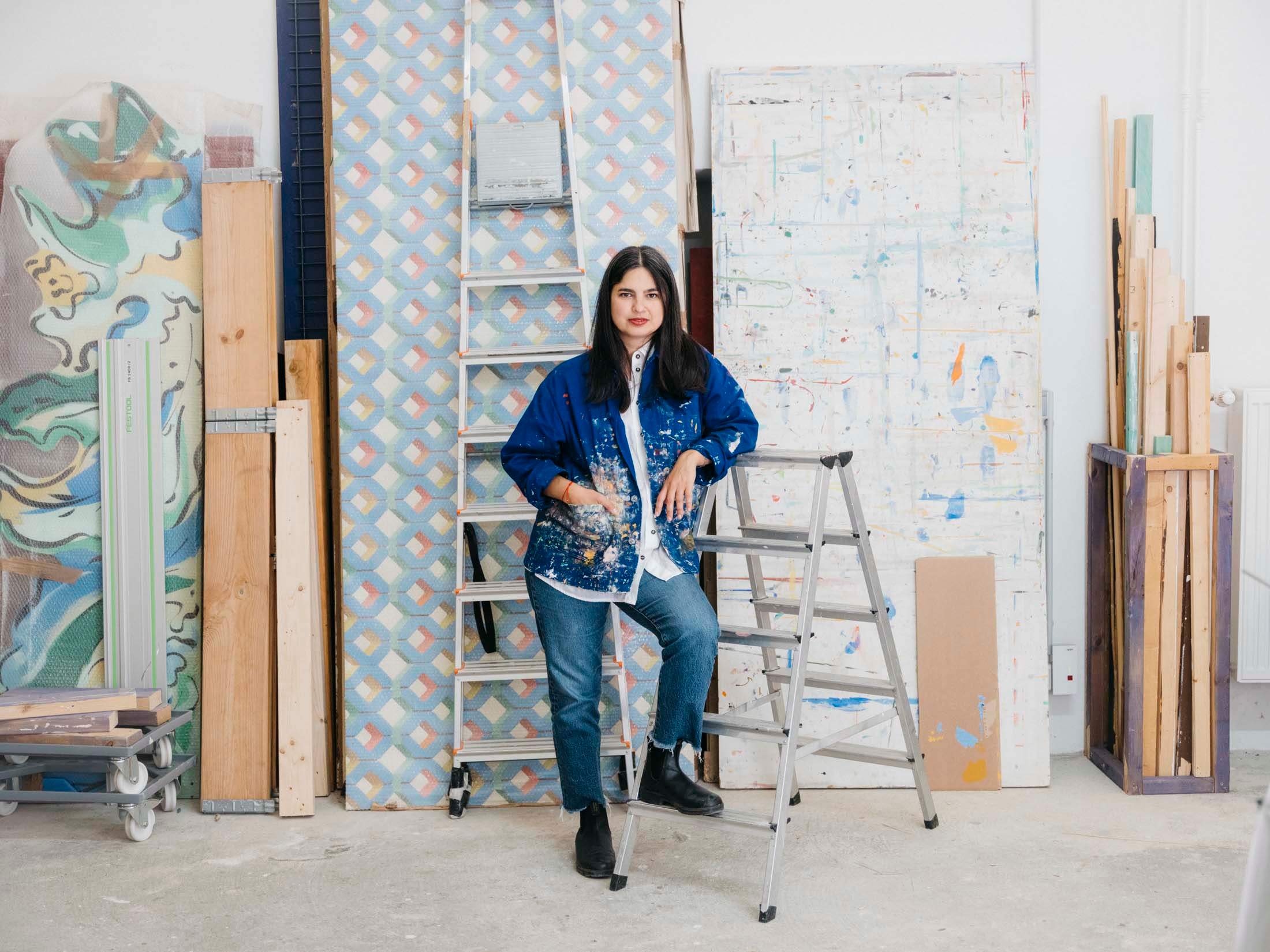
Calero is back in the German capital after spending much of this year in Venice. There, her large-scale installation – the Pabellón Criollo (Creole Pavilion) – is a colourful centrepiece in the Giardini during the Biennale. The pavilion has many of the hallmarks that Calero has become known for over the years. For the structure, she looked to Japanese teahouse design (“the masters of temporary architecture”), while the brightly coloured paintwork nods to the Caribbean.
She built most of her pavilion from parts of previous installations, working with Rebiennale, an organisation that reuses materials from the Biennale, and will in turn repurpose her construction for urban-regeneration projects in the city. For Calero, providing a second life to the materials that make up the pavilion isn’t just about reducing waste. “If you have used a piece of wood many times, even if it’s still the same piece of wood, it has stories behind it,” says the artist. Pabellón Criollo is designed as a welcoming gathering place for those visiting the Biennale. Calero wanted to create a pavilion that was unattached to any country, unlike the national pavilions that dominate the event. During the two and a half months that she spent in Venice working on the pavilion, Calero began to question some of the nationalism present at the Biennale. “You start to understand that, of course, the economics and the politics of each country make their projects completely different, so you can’t really compare them,” she says. Calero views her own pavilion as a third space that does not belong to any nation.
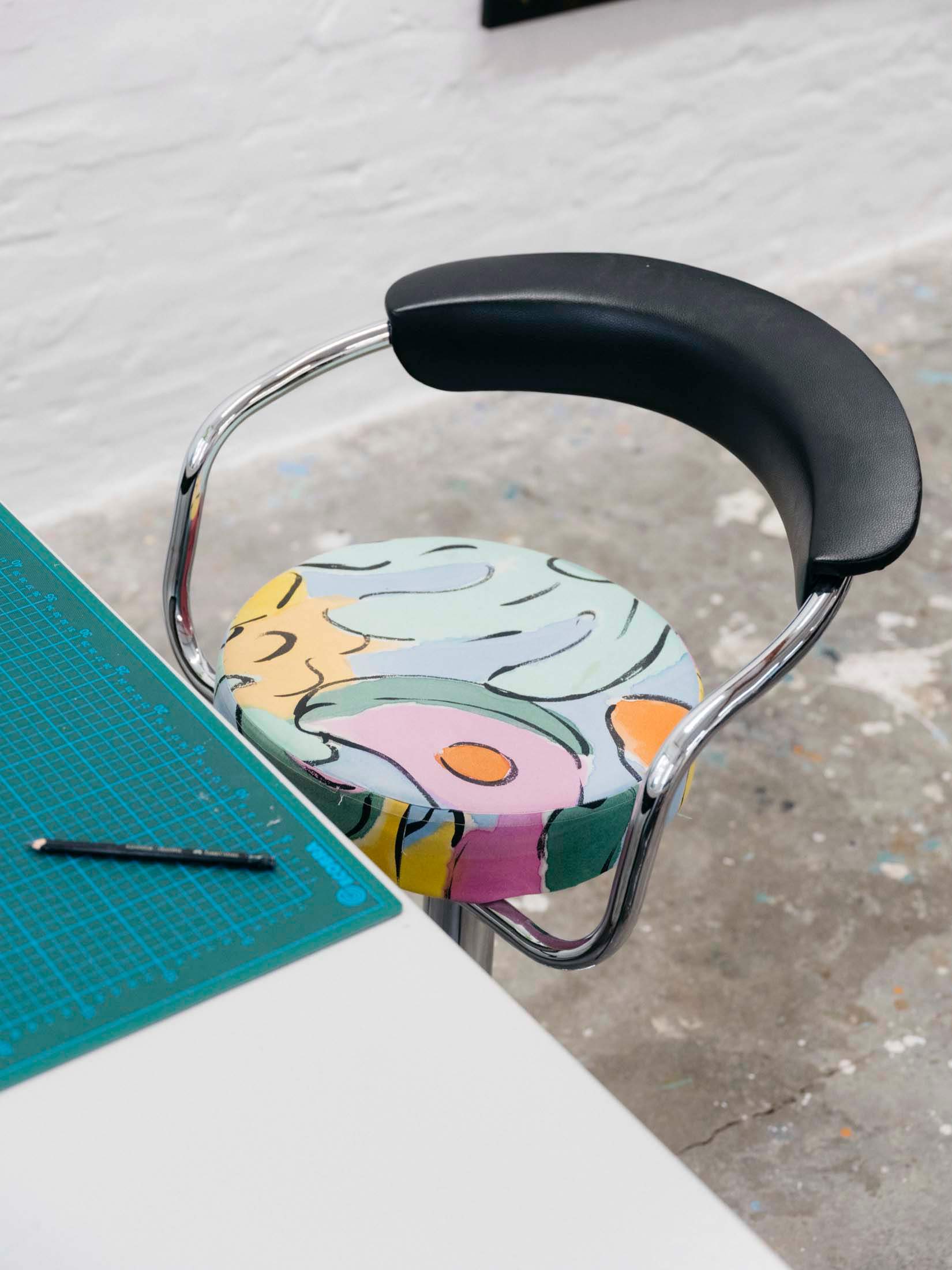
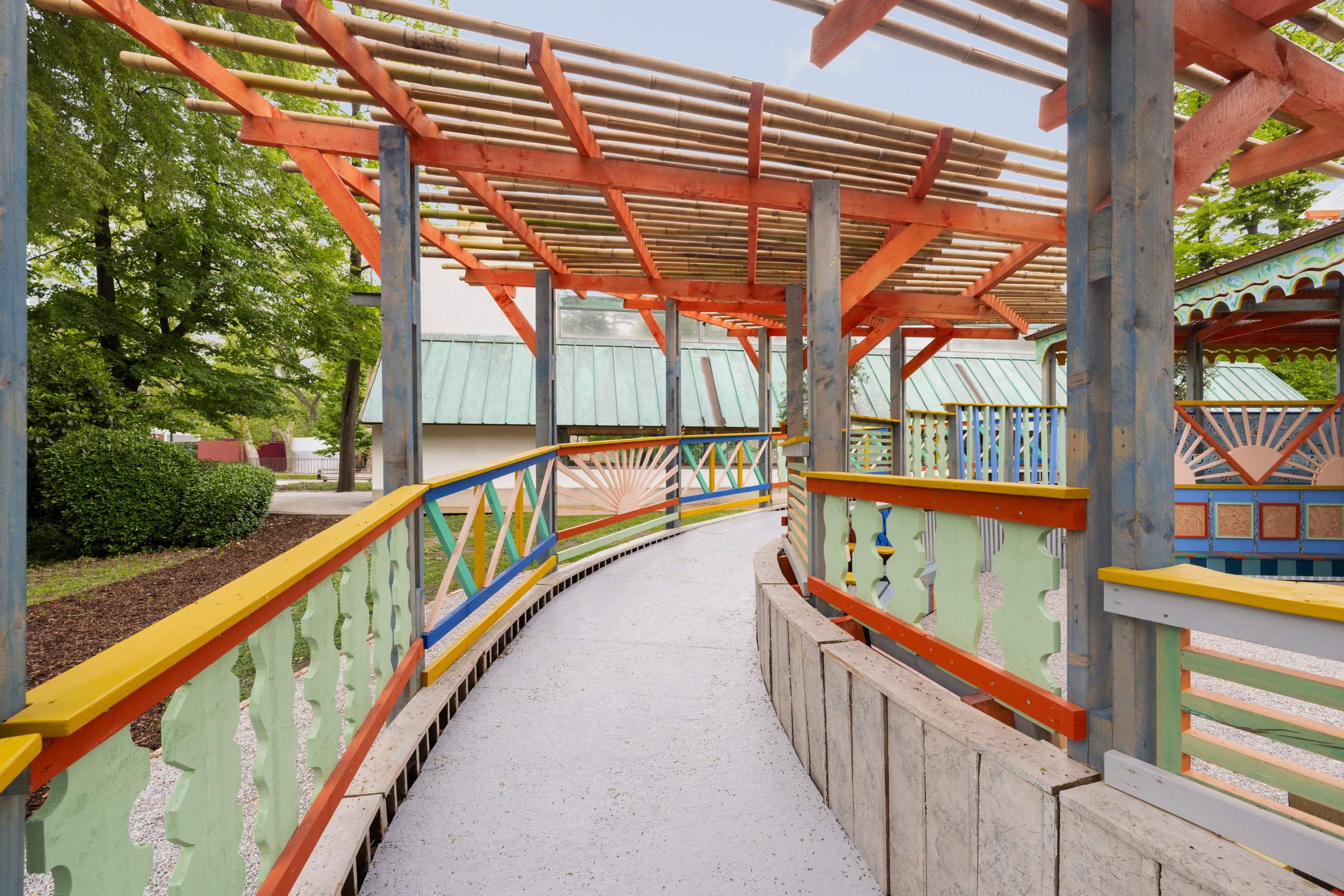
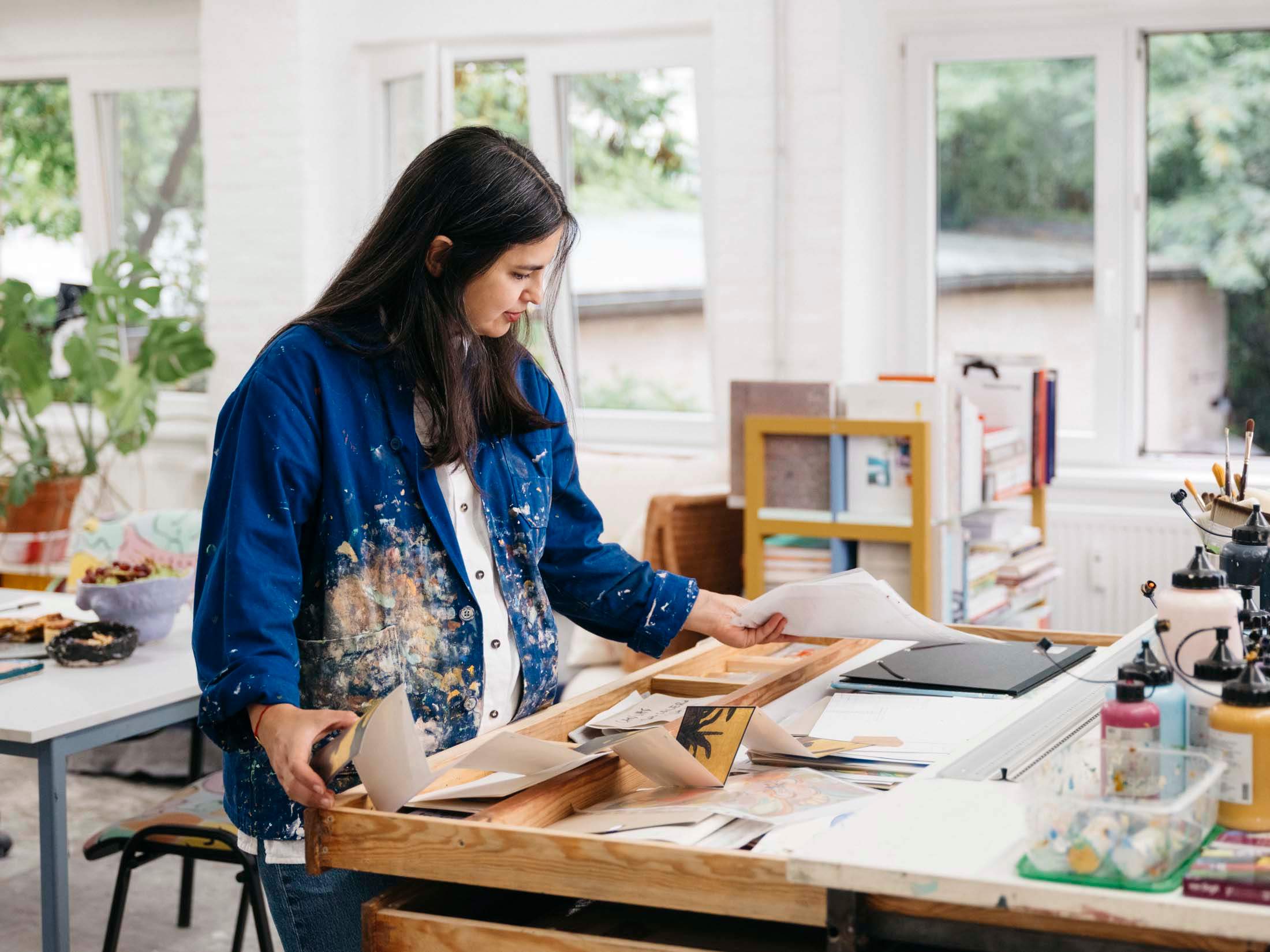
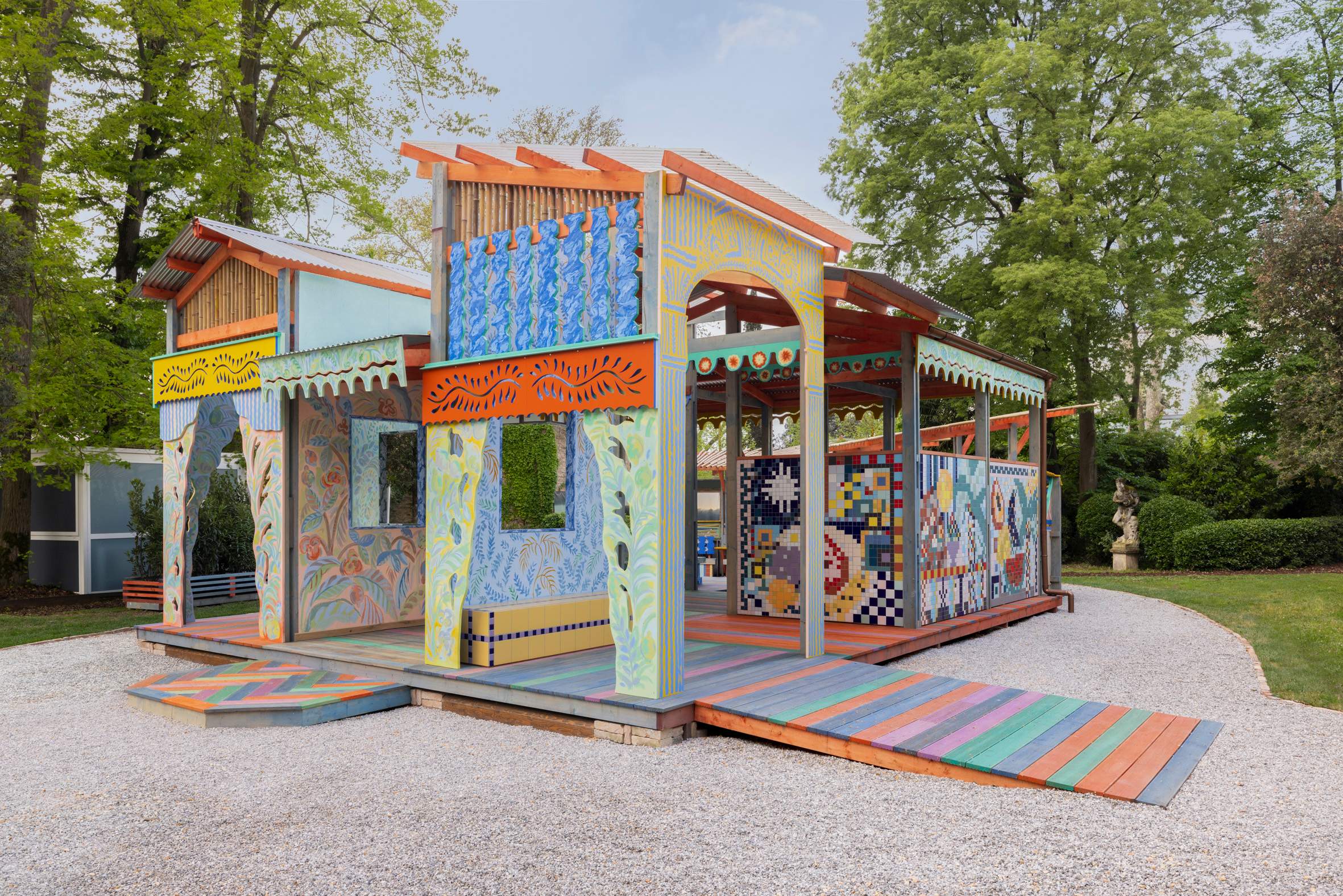
As well as speaking to the overarching theme of this year’s Biennale – “Foreigners everywhere” – creating a pavilion untethered to a particular nation resonates with Calero’s own background. She spent her early years in Caracas in Venezuela before moving to Europe to study in Spain. Calero thinks of her identity as “blurry” – the result of having lived far away from where you’re from for a long time. But, while it can be complicated, Calero sees this status as full of potential. “At the moment I’m focusing more on this diaspora position and what it means to be from nowhere or to be from a third space,” she says. “It doesn’t have to be a dark place, right? It’s just somewhere in between, places where very interesting things can happen.”
In 2009, Calero decided to settle in Berlin where she has built a strong community of artists. Alongside her husband, Christopher Kline, she co-owns a project space and initiative named Kinderhook & Caracas, in honour of their hometowns in New York and Venezuela. Since 2011 the couple have worked with Berlin-based creatives to host exhibitions in the space, which is an extension of their home. Calero describes Kinderhook & Caracas as a “laboratory of ideas” in which she has had to learn how best to support other artists. “I had to learn generosity; how to deal with someone else’s ideas and put them into practice,” she says. “That has been a huge lesson.” As well as supporting others, Calero credits the organisation with helping her to expand her practice and stay grounded while navigating the commercial art world.
Despite the success and longevity of the space, however, Calero sees Berlin and the experience of the city’s artists changing. “I came with nothing,” she says, but cheap rent, coupled with Berlin’s internationalism, made it a unique place to work comfortably as an artist. The atmosphere of the city also lent itself to this. A recent estimate suggests that there are 20,000 artists in the city. “I always describe Berlin as a place where you feel like you could be living in the woods and the city at the same time,” she says. “There’s always the option of isolating yourself.”
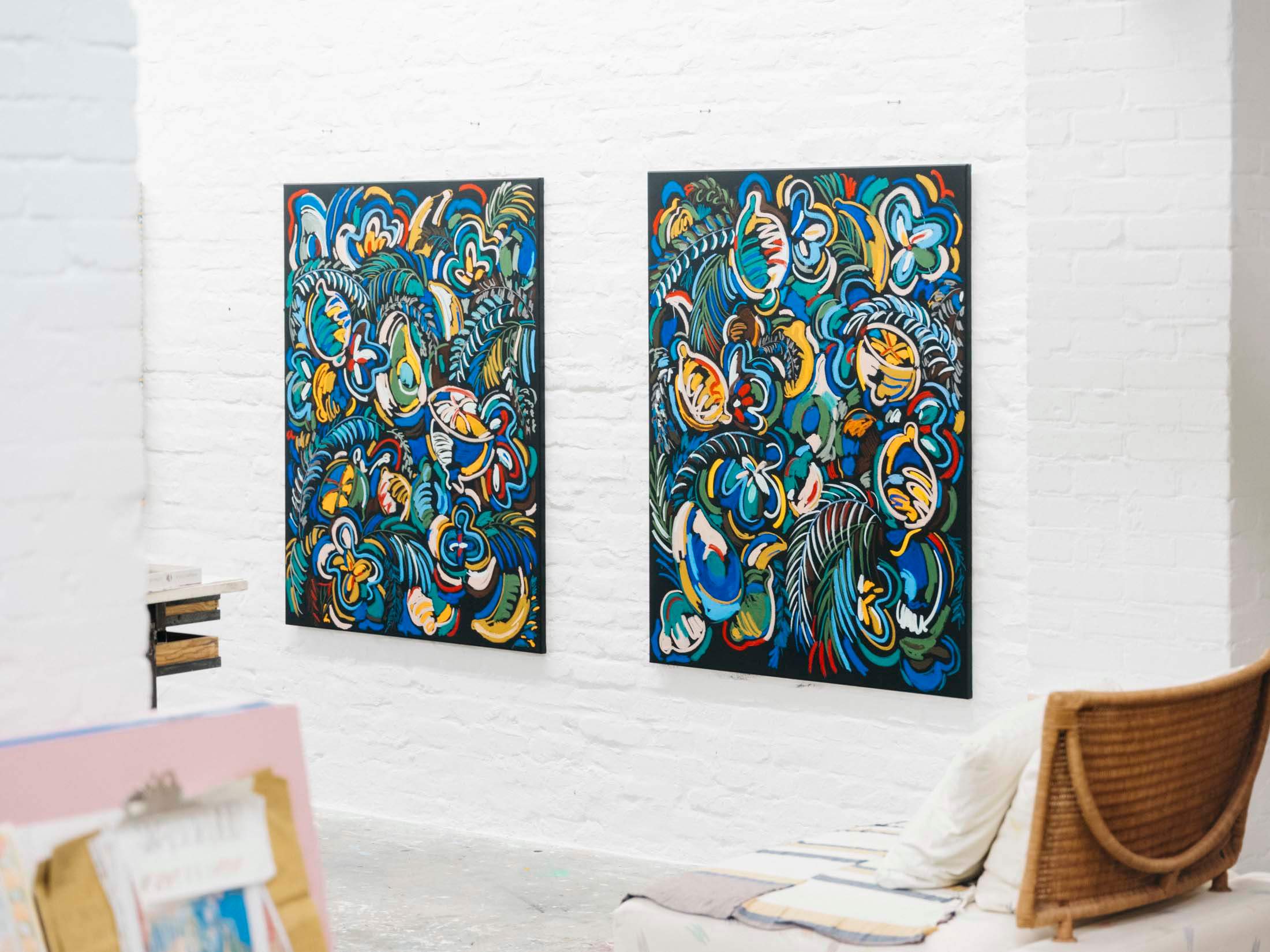

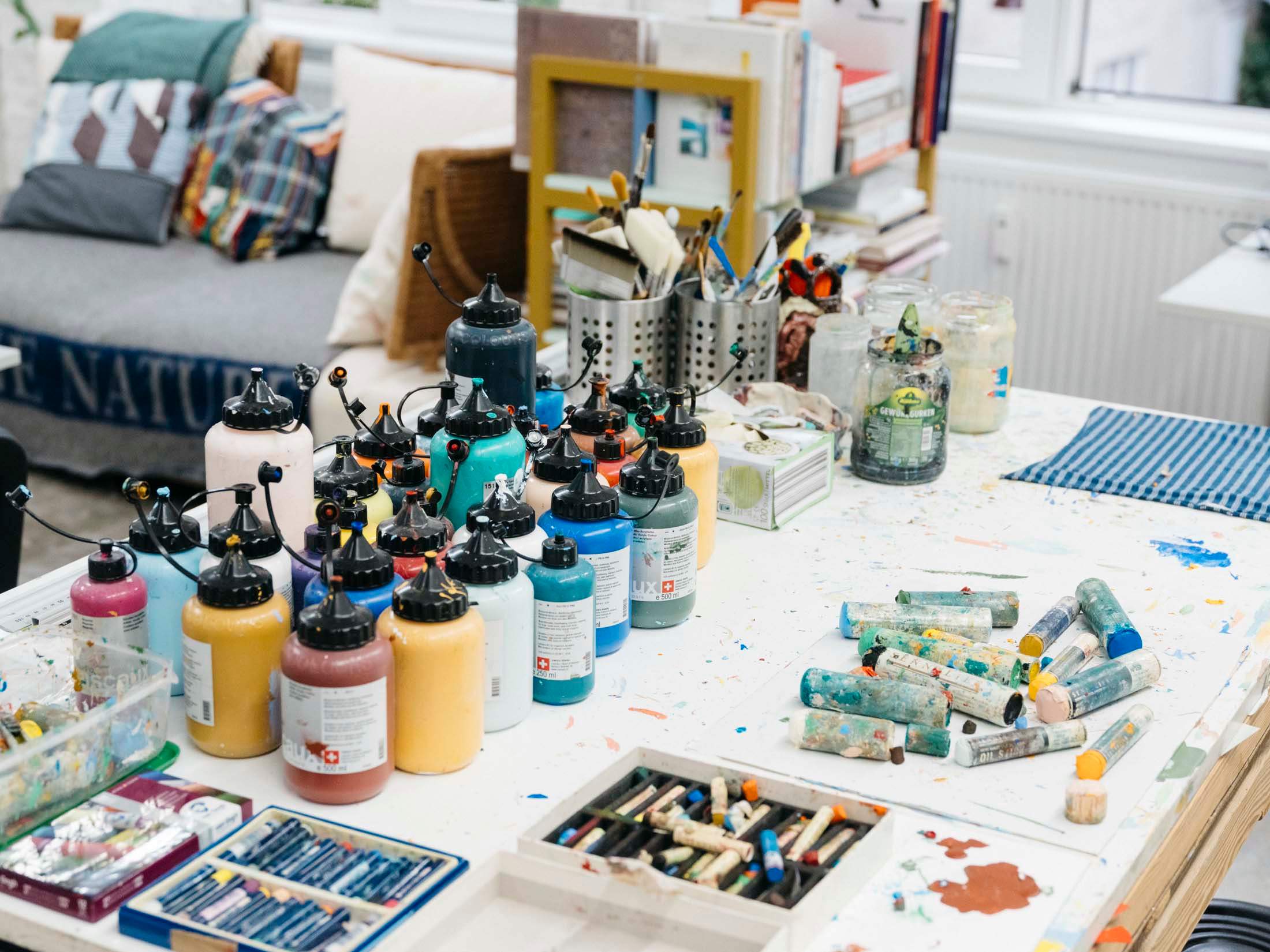
These characteristics made Berlin attractive for artists at all stages of their career.
Now, however, it’s harder to find inexpensive studios to rent, and Calero senses a change in the atmosphere for creatives. “I’m a little concerned about the art community at the moment,” she says. Calero cites her increased experiences of racial discrimination alongside political shifts as reasons for this. “I’m worried that we cannot express ourselves as artists in a city that had previously given us the freedom to allow us to be who we are.”
Calero’s pieces offer her a way to explore these thorny issues even if that aspect of her work is initially obscured by their bright and welcoming appearance. “Once you are in these cheerful spaces, you can read other messages inside,” she says. In her forthcoming show at Centro de Arte Dos de Mayo in Madrid – her first solo exhibition in the city – Calero has included a colourful life-size tourist bus (an idea that she first explored at Tate Liverpool in 2019) that takes visitors on an imaginary journey through a fictitious Latin American country. “You hear all these funny stories about the places you’re going to see but you never actually arrive,” she says. In this way, the work draws on Latin American storytelling traditions and reflects on some of the downsides of tourism. Here, as in all of Calero’s work, the wealth of research that goes into the project slowly reveals itself to the viewer. “I believe that when you explore difficult topics, it doesn’t always have to be shown in an uncomfortable way,” she says. “There’s always the option for conversation, rather than imposing a tough topic on someone.” Calero’s work comes alive when a museum visitor hops aboard the bus, or someone climbs the ramp of the Pabellón Criollo. “For me, an important part of art is the activation by someone looking at it,” she says. “In my practice, especially when it comes to space, there’s a lot of consideration about the person who is going to experience it.”
Calero has just finished a monograph of her work over the past decade. It is designed as a collection of magazines, which felt more accessible than a single heavy book. Again, she couldn’t help but begin to imagine the magazine as “spaces inside spaces – it can translate to everything when you start thinking in that way”. Now, Calero is planning to explore different spiritual connections with spaces, such as churches. She has just picked up a new stack of books to get stuck into but first she’ll need to clean and reorganise her space. “Lots of my practice is moving materials from one room to another,” she says with a laugh. —
Pabellón Criollo is at La Biennale di Venezia until 24 November. ‘Buscando Guanábana ando yo’ is at Museo CA2M in Madrid from 28 September until 5 January 2025.


